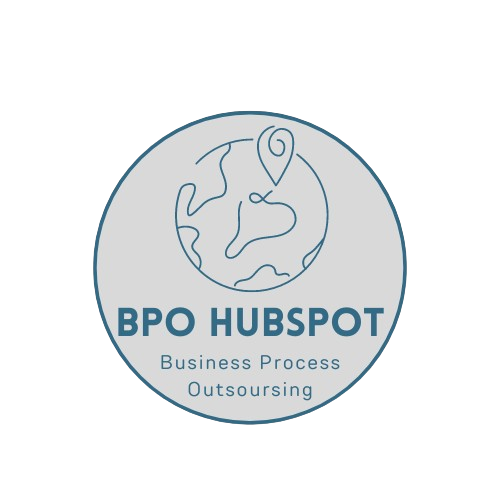Unlocking Efficiency: Understanding What is Outsourcing
Outsourcing, or Business Process Outsourcing (BPO), refers to the practice of contracting specific business tasks or processes to external service providers.

1. Introduction: What is Outsourcing?
Outsourcing, or Business Process Outsourcing (BPO), refers to the practice of contracting specific business tasks or processes to external service providers. This allows companies to focus on their core activities while leveraging the expertise and efficiency of specialized firms for non-core functions.
2. Why Do Companies Outsource?
Cost Reduction: Outsourcing helps companies save on labor costs, operational expenses, and infrastructure investments.
Access to Specialization: By outsourcing, companies can benefit from the expertise and advanced technology of external providers.
Focus on Core Competencies: Outsourcing allows businesses to concentrate on their primary activities and strategic goals.
Flexibility and Scalability: Companies can scale their operations up or down more easily with outsourcing.
Improvement in Quality and Efficiency: External providers often bring process improvements and efficiencies that enhance overall performance.
3. A Brief History of Outsourcing
The concept of outsourcing dates back to the Industrial Revolution when companies began to contract out manufacturing processes to external firms to increase efficiency and reduce costs. In the late 20th century, outsourcing evolved significantly with the advent of information technology and globalization. Key milestones in the development of modern outsourcing include:
1960s-1970s: The rise of electronic data processing and the initial wave of IT outsourcing.
1980s: The expansion of outsourcing to include a broader range of services such as HR, accounting, and customer support.
1990s: The internet revolution, which facilitated global communication and collaboration, leading to the establishment of large-scale outsourcing hubs in countries like India and the Philippines.
2000s-Present: The growth of offshore outsourcing and the emergence of specialized outsourcing sectors like Knowledge Process Outsourcing (KPO), Legal Process Outsourcing (LPO), and Recruitment Process Outsourcing (RPO).
4. Types of Outsourcing
Front Office vs. Back Office:
Front Office Outsourcing: Involves customer-facing services like call centers, customer support, and sales operations.
Back Office Outsourcing: Includes internal business functions such as accounting, HR, and IT services.
Geographical Classifications:
Onshore Outsourcing: Contracting services within the same country.
Nearshore Outsourcing: Outsourcing to neighboring or nearby countries with similar time zones.
Offshore Outsourcing: Contracting services to distant countries, often with significant cost advantages.
Strategic vs. Tactical Outsourcing:
Strategic Outsourcing: Long-term partnerships focusing on core activities to gain competitive advantages.
Tactical Outsourcing: Short-term, often cost-driven, outsourcing of non-core functions.
Classification by Area:
Business Process Outsourcing (BPO): Involves contracting out specific business processes such as customer service, transaction processing, accounting, and human resources services. The main goal is to reduce costs and improve efficiency by allowing experts to handle non-core processes.
Information Technology Outsourcing (ITO): Entails hiring external firms to manage IT infrastructure and related services, including desktop support, network and telecommunications services, software development, and system management.
Human Resources Outsourcing (HRO): Focuses on outsourcing HR processes such as recruitment, selection, training, payroll management, and benefits administration.
Finance and Accounting Outsourcing (FAO): Involves outsourcing financial and accounting tasks such as bookkeeping, billing, accounts payable, and accounts receivable to specialized firms.
Knowledge Process Outsourcing (KPO): Outsourcing of high-level tasks that require specialized knowledge, such as market research, data analysis, and business intelligence.
Legal Process Outsourcing (LPO): Outsourcing of legal services, including document review, legal research, and drafting of legal documents.
Research Process Outsourcing (RPO): Involves outsourcing research-related activities, including data collection, analysis, and reporting, to specialized firms with expertise in conducting detailed and accurate research.
5. Examples of Outsourcing
IT Services Outsourcing: Many companies outsource IT functions, including software development, technical support, and network management, to specialized firms in countries like India and Ukraine.
Customer Service Outsourcing: Major corporations like Amazon and Dell outsource their customer service operations to providers in the Philippines and other countries known for their skilled English-speaking workforce.
Manufacturing Outsourcing: Companies like Apple outsource the production of their hardware components to manufacturers in China, leveraging cost efficiencies and advanced manufacturing capabilities.
6. Conclusion
In conclusion, outsourcing has become a pivotal strategy for businesses aiming to enhance efficiency, reduce costs, and access specialized expertise. From its historical roots in the Industrial Revolution to its modern-day applications across various industries, outsourcing continues to evolve and adapt to the changing needs of the global market. By understanding the different types of outsourcing and the reasons behind its adoption, companies can make informed decisions that align with their strategic goals. As the outsourcing market grows and diversifies, it remains an essential tool for businesses seeking competitive advantages and operational excellence.
Ready to share your perspective? Feel free to leave a comment.


